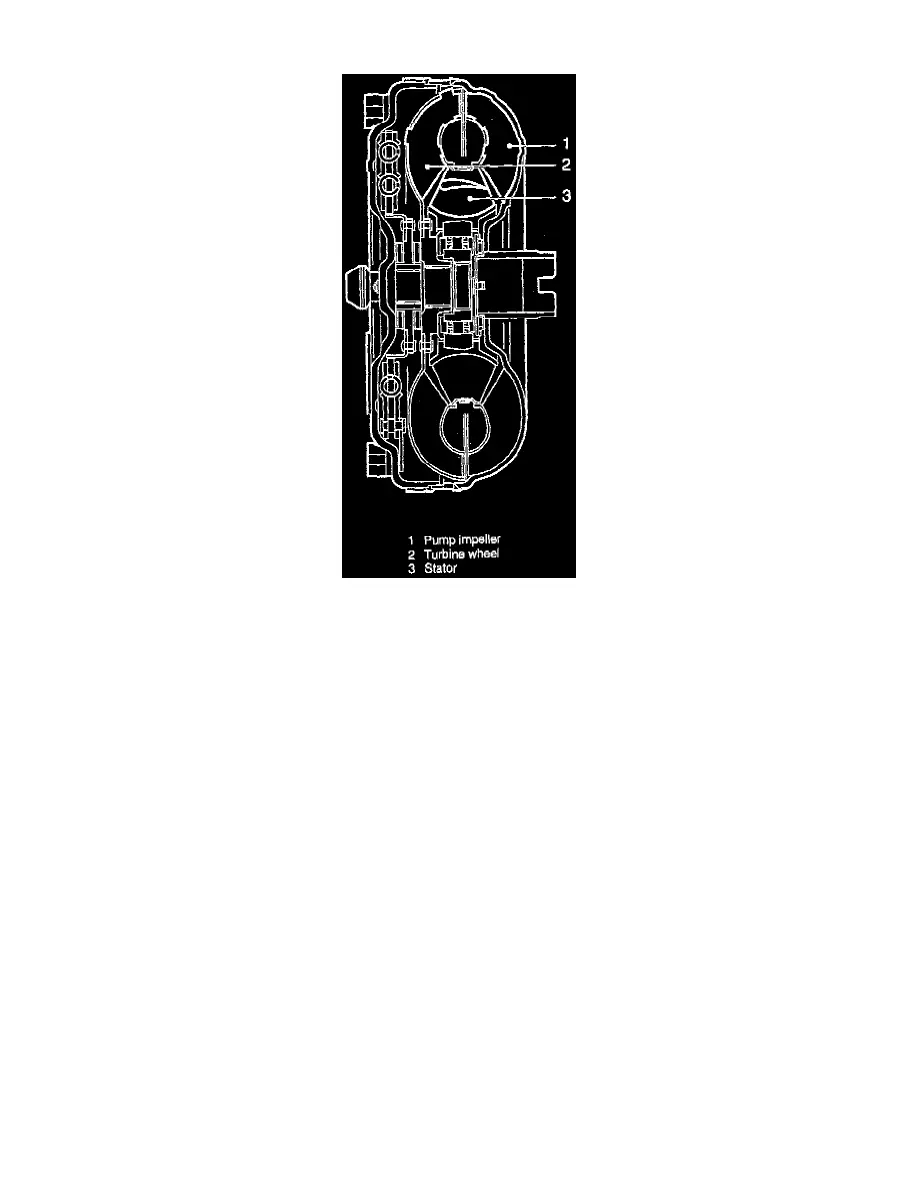9000 Hatchback L4-2290cc 2.3L DOHC Turbo EFI (1994)

Torque Converter: Description and Operation
The function of the torque converter is to transmit hydrokinetically the power from the engine to the transmission and to boost torque, particularly when
the car is pulling away.
The torque converter is connected to the turbine shaft.
Pump impeller, turbine wheel and stator are contained in an enclosed housing which is completely filled with fluid under pressure. Movement and power
are transmitted by the kinetic energy in the fluid The torque converter sustains a minimum amount of wear as there is no mechanical connection between
the driving and driven sections.
The engine driven impeller induces the fluid to rotate. Due to the centrifugal force, the fluid is forced outward against the outside of the pump impeller
where it flows with higher speed to the turbine impeller.
The kinetic energy of the fluid is converted into mechanical torsional movement in the turbine wheel. The fluid flows through the stator and is directed at
an angle which increases impeller torque. The stator is connected to the gear case via the one-way clutch. This diversion applies a torque to the stator,
and this increases turbine torque. Input torque from the engine is thus more than doubled when the vehicle is pulling away.
The relationship between turbine torque and the pump torque is known as "torque multiplication". The larger the speed difference between the impeller
and the turbine, the greater the multiplication will be. Torque multiplication is a maximum when the turbine is stationary. As the speed of the output shaft
increases, torque multiplication is gradually and steplessly reduced to a ratio of 1:1. The stator then rotates freely in the flowing fluid and the torque
converter acts purely as a fluid coupling.
A torsional damper is integrated into the torque converter, and its function is to minimize torsional oscillation and the load change shocks occurring in
3rd and 4th gears caused by mechanical power transmission. The torsional damper is connected to the transmission engine shaft which transmits the
power mechanically between the engine and the transmission.
